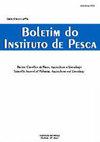Dredging on water bodies and margin interventions: effects on fish
IF 0.6
4区 农林科学
Q4 FISHERIES
引用次数: 1
Abstract
The urbanization process deeply affects rivers and streams, with numerous impacts, such as the discharge of sewers, dams, and pipework, causing profound changes in the water bodies characteristics and in their biota. In this scenario, the silting of rivers suffers one of the most impactful changes, as it undergoes a reduction in the depth and width of the rivers, triggering physical and chemical changes in the water, as well as in the structure of fish population, its feeding and reproduction habitats. As a palliative measure, it is normal to carry out the desilting (dredging) of rivers, an activity that is also very impacting. Floodings are one of the main factors that demand dredging to be carried out. This review was made to analyze desilting activities, their effects on biota and migratory fish, as well as to evaluate the best management strategies and mitigation of impacts on fish population. The shifting and removal of sediment from the riverbed can cause burial and massive death of eggs and larvae, in addition to interfering in the upward and downward migration of eggs, larvae, and adults of migratory fish. In addition, breeding and feeding sites can be impacted by sediment movement, dredging, and deposition. Some actions minimize the impacts of the silting activity recovering riparian forests, inspect the use of soil on the banks, move urban settlements away, assess the dredging site, consider the spawning sites and reduce the suspension of bottom sediments, as well as choose the best equipment and time for the performance of activities. Therefore, the development of research on the effect of dredging of water bodies on fish would contribute to a better management of the activity.水体疏浚和边缘干预:对鱼类的影响
城市化进程对河流和溪流产生了深刻的影响,如下水道、水坝和管道的排放,造成了水体特征和生物群的深刻变化。在这种情况下,河流的淤积是影响最大的变化之一,因为它使河流的深度和宽度减少,引发水的物理和化学变化,以及鱼类种群结构、觅食和繁殖栖息地的变化。作为一种权宜之计,对河流进行清淤(疏浚)是正常的,这也是一项影响很大的活动。水浸是需要进行疏浚的主要因素之一。本综述旨在分析清淤活动及其对生物区系和洄游鱼类的影响,并评价最佳管理策略和减轻对鱼类种群的影响。沉积物从河床上的移动和移除,除了干扰洄游鱼类的卵、幼虫和成鱼的向上和向下迁徙外,还会导致卵和幼虫的掩埋和大量死亡。此外,繁殖和饲养地点可能受到泥沙运动、疏浚和沉积的影响。一些行动将泥沙淤积活动的影响降到最低,恢复河岸森林,检查河岸土壤的使用情况,移走城市定居点,评估疏浚地点,考虑产卵地点和减少底部沉积物的悬浮,以及选择最佳设备和时间进行活动。因此,研究疏浚水体对鱼类的影响将有助于更好地管理疏浚活动。
本文章由计算机程序翻译,如有差异,请以英文原文为准。
求助全文
约1分钟内获得全文
求助全文
来源期刊

Boletim do Instituto de Pesca
FISHERIES-ZOOLOGY
CiteScore
0.80
自引率
0.00%
发文量
24
审稿时长
>12 weeks
期刊介绍:
To publish original articles of research and short communications in the following áreas: Fisheries, Aquaculture, Zootechnology, Limnology, Oceanography, Biology and Pathology of aquatic organisms. The publication depends on the approval of the Editorial Board, based on the peer review.
 求助内容:
求助内容: 应助结果提醒方式:
应助结果提醒方式:


